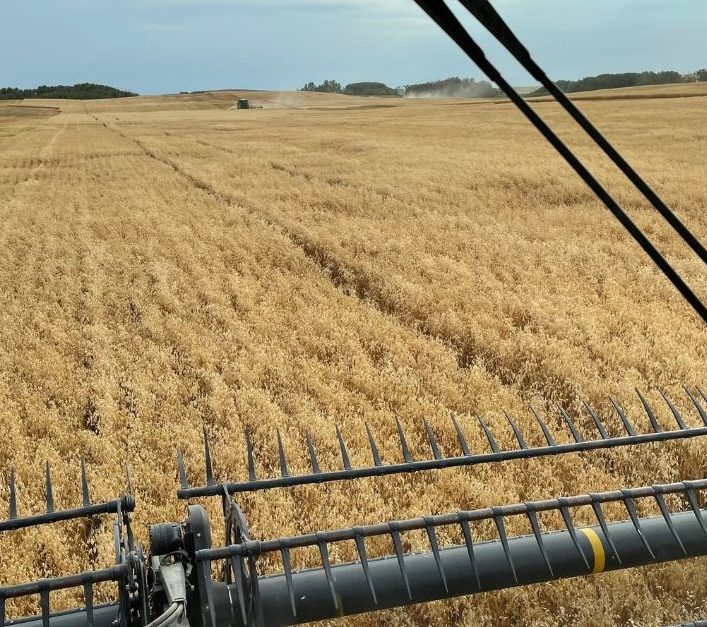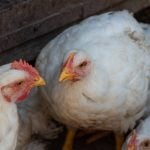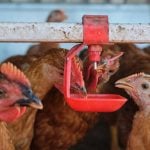New varieties often promise higher yields, more robust resistance, better standability and other benefits.
But there can also be trade-offs.
“Sometimes a new variety comes out and maybe the yield is better, but did you lose anything with that variety, whether it’s protein or maturity?” asked Greg Stamp of Stamp Seeds in Enchant.
“And then sometimes I find peoples’ memories are a little short. For example, fusarium was really bad a couple of years ago. You don’t want to jump into a variety that has a poor fusarium package just because it hasn’t been an issue for two years. This year it could hit.”
Read Also

Hail research hopes to benefit potato growers
Alberta research scientist measures hail storm and heat dome affects on potato crops
It’s also crucial not to take claims at face value, said Karlene Yakemchuk, sales manager with Alliance Seed and a farmer herself.
“At the end of the day people should really be checking their Alberta Seed Guide and consulting their local agronomist.”
That said, here are some varieties to consider.
Canola: Yield always No. 1
“B3010M has really stood out to me since its launch as an excellent option for growers wanting to grow a Liberty Link canola with strong clubroot resistance genetics and blackleg resistance, mid-maturing with straight cut or delayed swath potential.”
Corteva Agriscience has been talking up a future sixth-generation clubroot package.
“(The CR6 is) essentially a few generations newer and resistant to new pathotypes that keep evolving,” said Yakemchuk. “It’s something they have been discussing at agronomic events, making it very exciting for canola growers, especially those in high-risk clubroot regions such as the Edmonton-Legal-Westlock region.”
All new canola hybrids have an increased yield potential, she added.
“That’s reason No. 1 why they’re being brought to market.”
The major seed companies are all trying to respond to the needs of canola producers, said Yakemchuk.
“Whether you look at Corteva’s portfolio, BASF’s portfolio, DeKalb, Brett Young, Canterra or Proven Seeds – I might be missing a few – I think they’ve all got something to offer the markets,” she said. “It’s just a matter of producers figuring out what’s most important to them. Is it yield potential and disease package or is it yield potential and standability or is it yield potential and straight cutting? On every farm it’s going to resonate differently.”
Wheat and the midge threat
However, producers are looking for something new.
“More producers are using (CWRS) varieties like AAC LeRoy VB, AAC Wheatland VB and AAC Starbuck VB,” she said.
A big appeal of those three varieties is their wheat midge tolerance. (VB stands for varietal blend, so 10 per cent of the blend is a variety that wheat midge can feed on. Midge resistance depends on a single gene, and so a refuge aims to prevent resistance midges from becoming the dominant population.)
The phase-out of chlorpyrifos (Lorsban) has upped the ante.
“Now that we have one less control option, with Lorsban being banned from the market, I think people are starting to realize that they may need to rely on midge-tolerant wheat as an effective integrated pest management tool,” said Yakemchuk.
Although she considers all three to be good options, she highlights LeRoy.
“It’s got a great fusarium package on it as well and it is the earliest-maturing of the three so I am hoping it will be a successful variety for farmers to try if they are looking for a new hard red and a new midge tolerant line.”
A CWRS that deserves attention this year is the new AAC Hodge VB from FP Genetics, she said.
“It’s another variety with strong yield potential, a great disease package and improved standability.”
Sarah Weigum with Alect Seeds in Three Hills is finding that many customers are looking for soft white wheat for feed, such as AAC Paramount.
“It’s not a new variety but I think it’s a crop type that’s growing in popularity, especially in Three Hills going north,” she said. “Although it tends to be a longer-season crop than a hard red spring wheat, you can grow it very successfully here and around Edmonton.
“It’s a unique wheat in that it can be multipurpose. If you have cattle, it can be used for silage, but it can also be harvested and achieve good grain quality for milling or malting.”
There’s an opening in the marketplace for good solid-stem wheat varieties, said Stamp.
“It’s something people are looking for in certain pockets where sawfly is a problem.”
However, options are limited.
“The new durums with solid stems are excellent but with the hard red spring wheats and other classes of spring wheats, there are no really good options that are high-yielding,” he said. “So that’s a hole in the marketplace that I think breeders are working on. But it takes a lot of time so it could be five or 10 years before a really good solid stem for hard red comes back out again.”
New possibilities for feed and malt
“I would say AB Cattlelac is a really awesome option that’s been on the market for a couple of years.”
She also recommends AB Advantage, also from the development centre.
CDC Austenson has been a popular, high-performing feed barley variety for a number of years, said Weigum. However, it’s fairly tall and tends to lodge. For cash crop producers looking to produce less straw, she recommended a European variety called Esma.
“It’s kind of new for Western Canada,” she said. “It’s a really short two-row feed barley with really excellent standability. It out-yielded the Austenson on our farm this year by probably 10 or 15 bushels, and the Austenson did really good. That kind of tells you its potential.”
The downside of Esma is greater susceptibility to smut compared to Austenson or Canadian varieties in general.
“So just be mindful scouting for disease and be prepared to apply a fungicide.”
On the malt side, CDC Fraser has been a standout, said Yakemchuk.
“It’s got a really nice disease package on it for a two-row malt and it has a similar malt enzyme to AC Metcalfe and CDC Copeland,” she said.
“AAC Connect has been on the market for a few years but it’s really starting to make inroads with the maltsters. It’s a solid variety and it’s been yielding very well. On our farm it’s been a good performer yield-wise.”
Weigum is considering CDC Churchill as a malt variety on her farm.
“It seems to have growing acceptance from some of the malt barley buyers. It’s got good resistance to stem rust and just performs well yield-wise.”
Stamp has had good experience with Churchill as both a feed and malting variety.
“It did excellent in our yield trials. It’s as good if not better in the feed market than Austenson. It also sells well into a very small opening in the malt market right now.”
Yellow pea variety turns heads
“We just recently got the regional variety trial data back on it. It averaged out to be the top-yielding yellow pea in Alberta,” she said. “The experience for farmers this year has been phenomenal. They say it’s been one of the easiest pea harvests they have ever had due to the excellent standability and yield potential.”
That may make it hard to find.
“I anticipate it will sell out quickly,” she said. “It was a somewhat limited launch this year and next year there will definitely be a lot more available.”
Stamp highlights CDC Lima, a large green lentil from Clearfield.
“The yield response compared to other green lentils has been excellent,” he said.

Oats: Two frontrunners
“It won all of its regional variety trials across the Prairies during registration,” she said. “It’s been a strong performer with one of the best disease packages you can get on the market. It’s a taller plant but it’s got excellent standability.”
CDC Arborg, a milling oat, is another strong contender, she said.
“It’s got good yield, a good disease package and its standability has been good,” she said.
“I think those are two oat varieties that farmers will definitely want to keep an eye on if they’re an oat grower looking for something new.”
Bigger is better for flax seed
“I like it because it has a little bit bigger seed size than the variety we were growing previously,” she said. “Bigger seeds are easier to harvest. The challenge with flax sometimes is it’s a small-seed grain and getting the chaff out of the combine and keeping the grain in becomes more challenging.”
Weigum has planted CDC Roland under adverse conditions in the past two years so in some ways she hasn’t seen its full potential. However, she’s fairly confident based on indications so far.
“It’s shown a pretty significant yield bump in both the registration trials and the regional variety trials.”
















